Me: What is the definition of innovation? Corey: Bringing up and developing new ideas. The idea could be a process or program. Most of the time I find that innovation comes from general conversations with people. It is usually spur of the moment and not planned. Me: What processes/attitudes/routines lead to innovation? Corey: Process: We utilize Scrum, which is a framework for collaboration. We break out into smaller teams called Scrum teams. We meet daily and show off the work we did the day before along with planning out what will be done the next day. This helps us keep track of what is done and what needs to be done to complete our objective for the sprint (a 2 week time period to get a tool or process completed). If you don't have a good game plan to complete objectives most of the time they fall flat. We also have a weekly meeting in our HVAC department with select individuals to talk about issues we are having and ways to solve those issues. A lot of time I will just sit back and listen and break down what the users are talking about. Usually my best innovative ideas come from listening in that meeting and thinking about them later in the day, breaking it down into smaller tasks that make the goal easier to obtain and easier to convey to other users. Attitude: Having innovative ideas can be frustrating at times, coming up with a solution that works for everyone. I find having an open mind, positive attitude, asking a lot of questions leads to innovative ideas. When the Revit Initiative started at KLH 2 years ago, I use to tell people to not say the word impossible or "that can't be done". I go in with the mindset that anything is possible if you clearly define the problem, collaborate with likeminded people and put in the work to get the task done. I don’t always have the answers to everything, so team up with people that know what they are talking about. Having a good team helps and not letting anything stop you from completing your objective. Routines: I have ways of doing things both while at work and at home. At work you need to collaborate with others. It's important to have a good team, with everyone on the same page. As a development team we meet daily to make sure we get the tasks done. As a department we meet once a week to discuss topics. I have several other smaller meetings throughout the week, with select individuals throughout the company to brainstorm and throw ideas out. Off work hours, I think it is crucial to have time to clear your mind, not necessarily focus on work, and let your mind wonder. For me, it is going on a run. Some days I just run, listen to music and enjoy being outside and then there are other days when there has been an idea floated out to me at work and when I run the idea blossoms. My mind is clear and I can fully think about that idea without any distractions. More than once I have had to sprint home from the middle of a several mile run to write down ideas that I have thought (dynamic families is one of the ideas that came to me running). For me it is running, but others have to find something that is calming and puts you in the right mindset. Me: What are potential issues/ problems with innovation? Corey: · Getting overzealous. Sometimes we have an idea and we think it is the next Amazon. When we started the development team we took any idea and ran with it, whether it was a good idea or not. We started developing tools that we thought would be useful, but rather they were tough to complete and people really didn't want to use it anyways (how many times have people use AutoRouting, the first tool we developed). You can't just take any idea and run with it. You have to break it down, find out if it is useful, find out how much it's going to cost to develop. Once you find the business value then you can determine whether it is a good idea. Innovation is great when it is thought through, but if it isn't, it could cost you a lot of time and money. · Not being agile. You have to be able to change course and switch up your plan if need me. With new technology that is rapidly being developed you always have to be on the lookout of what is on the horizon. If our company would have went all AutoCAD instead of Revit and came up with cool ideas for AutoCAD, we may have had a successful business model for a few years, but with everything going 3D, using VR and AR it doesn't make sense. You have to be able to switch directions if needed. Don’t be afraid to kill an idea if it isn't working. It's ok to backtrack. Me: What is a “dream” project that you would like to work on? or have worked on already? Corey: Project Wise - Working on the NASA project for the MARS 2020 rover was incredible. Using technology like laser scanning, Clash Viewer, MiSo and other tools that we created to get to a fully coordinated model was the project of a lifetime. Whenever I see articles about Mars 2020 I can think that I had a small part in helping with that (granted it is a very small part). Innovation Wise - I would love to create a tool that unites that construction industry and helps alleviate some of the issues that plague our industry. There is a lot of waste with Construction projects and a lot of it can be avoided. I feel like we are working on a lot of tools right now that start to help the problem. I feel like there is an overall process that will help all businesses involved. To be able to steer a whole industry in a certain direction would be amazing. I feel like we can do it. Makes me very excited for the future.
0 Comments
"Exploring the problem of the bees through engineering and art"
While I think many of us view solving the worlds problems through hard research and data science, the theme of "arts based research" is becoming more and more prevalent as a means of qualitative research and problem solving, as it is a means of communicating how me interpret the world through design and "art". I wanted to highlight different "artists" I have identified as tackling this bee problem through a form of art. Rachel Katz and the Greenfield Bee Festival
Artist Residencies
To accompany the process of community building through the study and practices of beekeeping, the Bee Time artist residency program was initiated to catalyze the practices of artist community building through propelling live work conditions which simulate that of a bee hive. By using practices of contemplation and imagination as a way of gaining new perspectives into the world of the honeybee, artists are invited to learn about bees and explore the possibility of creatively engaging with the hives within their landscape.
Bee Time Artist Residency is a place where participants share communal living during a period of two weeks. They have daily visits with local beekeepers and ‘studio time’ to respond artistically to what they are learning. The residency culminates in a public exhibition of work in progress and a sharing of the learning process. The program aims to introduce to the artists a bee centered approach to beekeeping, and a regenerative approach to the landscapes well as seeks to inspire re-connection with our natural, cultural and social environment, and explore self-organizing principles inspired by hive consciousness. Artists from all disciplines are invited to participate, as well as researchers in fields such as systems thinking, humanities, social sciences and deep and expanded ecology. Reflecting on the tactic of creating these live-work bee themed simulations for artists, I think this can be an effective tactic in fostering a sort of "method acting"-like approach by immersing the artists to connect with a hive. This creates deeper themed works of art by allowing the person to become a part of a different world and deeply empathize with the scale of the problem and the bees themselves. it creates a human-bee connection, making them more emotionally attached once they understand them better, which is a really fascinating way to create awareness for artists to then interpret and symbolize in their work. Below is a video by Fatema Abdoolcarim, one of the artists who participated in these communities, and I can sense a deep connection and emotional when viewing their work. Sarah Hatton: Conceptual Art - Bee works
"The link between neonicotinoid pesticides and the worldwide decline of bee populations is a crisis that cannot be ignored.I have arranged thousands of dead honeybees in mathematical patterns symbolically linked to monoculture crops, such as the Fibonacci spiral found in the seed head of the sunflower. The viewer experiences the vertigo of this lifeless swarm, a dizzying optical illusion that echoes the bees’ loss of ability to navigate due to the toxins locked within the very source of their sustenance."
http://sarahhattonartist.com/portfolio_page/kill-chain/ |
AuthorWrite something about yourself. No need to be fancy, just an overview. ArchivesCategories |

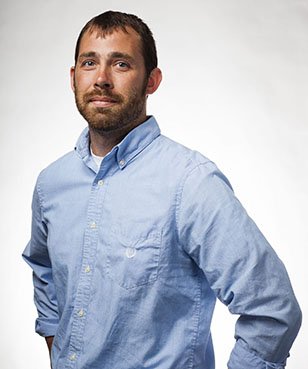
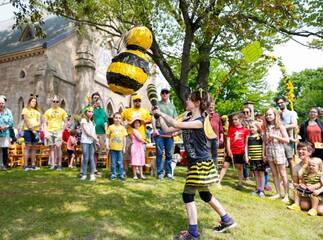
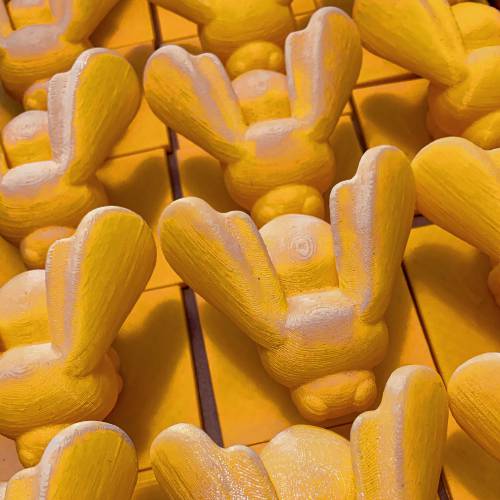
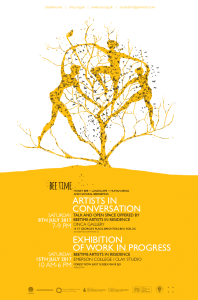
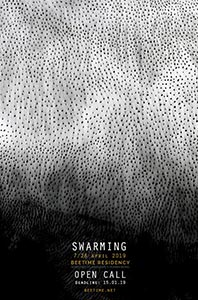
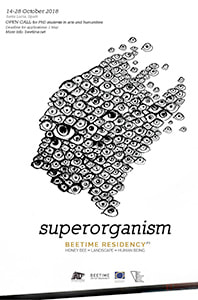
 RSS Feed
RSS Feed
